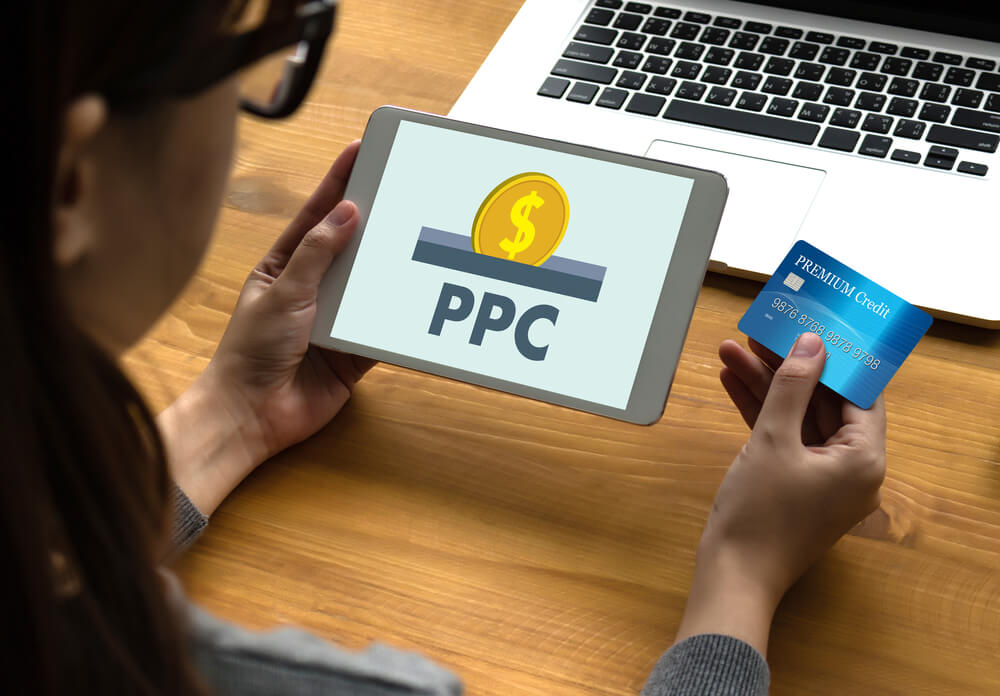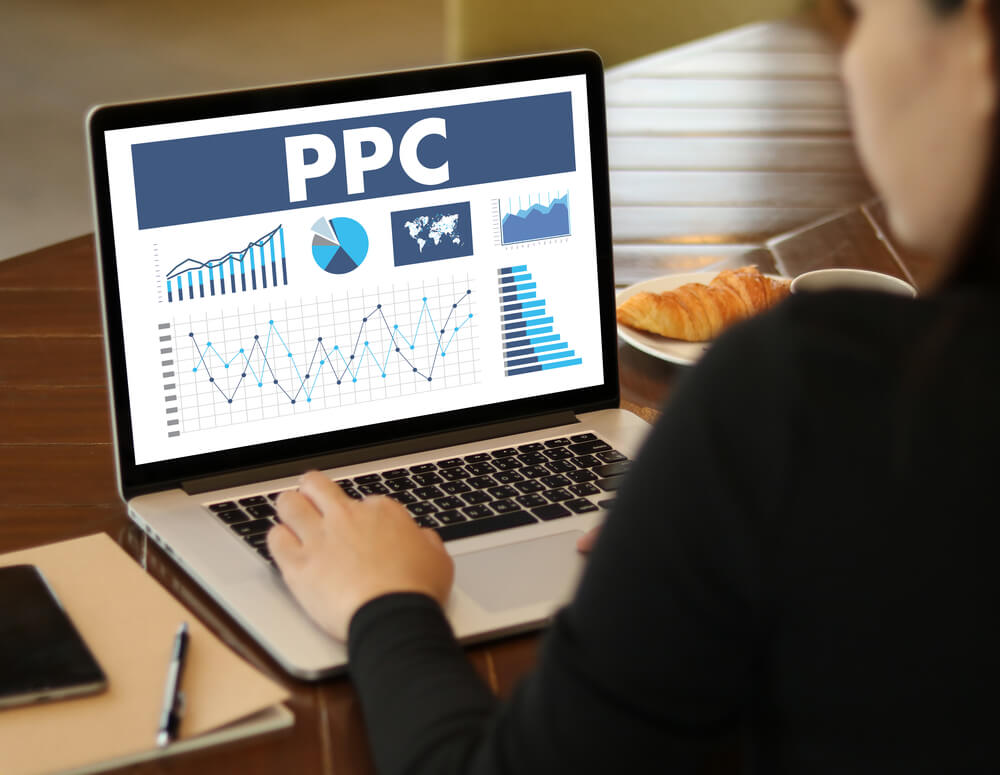
PPC Essentials for B2B Startups: A Quick Guide To Save Money
Business-to-business (B2B) startups can use pay-per-click (PPC) advertising to boost their reach. This marketing strategy creates immediate visibility and drives targeted traffic to B2B websites.
By strategically utilizing PPC, startups can reach their potential business clients, enhance brand recognition, and effectively compete in the digital marketplace. To further maximize the benefits of PPC, B2B firms must focus on cost-effective strategies.
A trusted PPC agency helps save money through key strategies:
- Clear objectives
- Keyword research
- High-performing ads
- Optimized landing pages
- Efficient geotargeting and ad scheduling
- Advanced automation and bidding strategies
- Effective A/B testing
- Thorough remarketing and tracking
Find out how your B2B startup company can benefit from PPC. Let’s go!
If you want to learn how Digital Authority Partners can increase your PPC effectiveness, watch this video!
Laying the Groundwork for Cost-Effective PPC
Businesses need cost-effective PPC to ensure an optimal advertising budget while maximizing the return on investment (ROI). Cost-effective strategies help companies reach their target audience without overspending, allowing them to generate leads, increase conversions, and remain visible in a competitive market.
A. Understanding PPC Basics
PPC is a digital marketing model that requires advertisers to pay a fee each time someone clicks their ad. It is an effective way to drive targeted traffic and increase online visibility. With PPC, businesses such as B2B firms can place ads on search engine results pages (SERPs) or other online platforms while controlling their budget.
PPC precision targeting enables B2B companies to reach specific audiences based on location, demographics, and user behavior, ensuring the most relevant prospects see your ads. PPC platforms such as Google Ads and Facebook offer comprehensive analytics and tracking tools to easily measure the performance of PPC campaigns.
PPC also provides control over the budget since marketers can set time-based limits and adjust spending based on the campaign's performance and objectives. It also offers quick lead generation capabilities and accelerates the sales process, driving potential customers to take immediate action, such as filling out forms or making inquiries.
B. Defining Clear Objectives
Every PPC marketing campaign must start with clear objectives. Clear objectives ensure efforts align with business goals, allowing realistic expectations. Businesses can track the progress of their campaigns accurately and make informed decisions based on measurable results.
Well-defined goals enable businesses to optimize their PPC strategies, fostering more efficient resource use and a higher likelihood of achieving desired outcomes. Setting specific goals allows firms to accurately identify their target audience and create tailored campaigns that resonate with potential customers. It also helps create more relevant ad copy and landing pages that align with the targeted objectives.
Finally, setting measurable goals facilitates accurate ROI calculation. B2B businesses can quickly identify the most profitable campaigns and make adjustments to improve overall efficiency and profitability.
Smart Strategies for Budget-Friendly PPC

Budget-friendly PPC emphasizes cost-efficiency without compromising the campaign's effectiveness. It involves optimizing ad spending through targeted keyword selection, precise audience segmentation, and continuous monitoring and adjustments. An expert PPC agency uses the following strategies to create budget-friendly campaigns.
1. Perform Keyword Research on a Budget
Effective keyword research maximizes a business’s online visibility without heavy investments. By focusing on high-intent and long-tail keywords, marketers can target a more specific audience, increasing their chances of conversion and optimizing their strategies. These techniques can help conduct budget-friendly keyword research:
- Use free keyword research tools such as Google Keyword Planner, Ubersuggest, or Keyword Tool. These platforms can provide valuable insights into search volume, competition, and keyword suggestions without significant financial investment.
- Prioritize long-tail keywords, which are more specific and typically have lower competition. They target niche audiences and tailor content to specific needs. Searching these demonstrates higher user intent and is more likely to result in conversions.
- Conduct a thorough analysis of your competitors' keywords and identify gaps in their strategies. Look for long-tail keywords they might have missed and target those to capture a unique market segment.
- Understand the search intent behind the target keywords. Whether it is informational, navigational, transactional, or commercial investigation, align content with the user's intent to increase the likelihood of engagement and conversions.
- Take advantage of Google Autocomplete and related searches to generate additional keyword ideas.
- Review existing content and identify opportunities to naturally incorporate relevant long-tail keywords.
By implementing these budget-friendly keyword research tips and focusing on high-intent and long-tail keywords, B2B businesses can enhance their online presence, reach a more targeted audience, and maximize ROI without breaking their budgets.
2. Craft High-Performing Ads
Crafting high-performing ad copy maximizes clicks and drives conversions. By creating compelling and engaging ad content, B2B firms can attract and encourage their target audience to take desired actions. Quality ad copy reduces costs per click (CPC), improving ad relevance and increasing the clickthrough rate (CTR).
Here are PPC agency strategies for creating ad copy that maximizes clicks and helps to reduce CPC:
- Understand the target audience's pain points, preferences, and needs. Craft the ad copy to showcase how the product or service can provide the ideal solution to their problems.
- Communicate unique selling points in the ad copy to differentiate your offerings from competitors. Focus on what separates the product or service and why customers should choose your business.
- Use persuasive language that encourages users to take immediate action. Incorporate strong verbs, such as "discover," "explore," "try," or "shop," to prompt users to engage with the ad.
- Ensure the ad copy aligns seamlessly with the landing page content. Maintain consistency in messaging, visuals, and offerings to provide a cohesive user experience.
- Integrate relevant keywords into the ad copy to enhance visibility and rank.
These strategies can help B2B companies create compelling ad copy that resonates with their target audience, maximizes clicks, and drives down CPC, leading to a more cost-effective advertising campaign.
3. Optimize Landing Pages
Optimizing landing pages for conversions can significantly impact conversion rates, improve the overall user experience, and drive business growth. Furthermore, optimizing landing pages can positively influence the Quality Score, reducing CPC.
Optimized landing pages cater to the specific needs and expectations of the target audience, resulting in more conversions. By providing a clear value proposition, relevant information, and a compelling call-to-action (CTA), marketers can guide users to take the desired action, whether purchasing a product, filling out a form, or subscribing to a service.
Well-designed and user-friendly landing pages also create a positive experience for visitors. Remember these best practices to optimize landing pages:
- Craft compelling and relevant content. Provide clear and concise information about the product or service, highlighting its benefits and value proposition.
- Engage your audience with visually appealing content, including images, videos, and infographics, to effectively convey the message.
- Place a prominent and compelling CTA that stands out on the page and prompts users to take action. Ensure that the CTA is easily accessible and visible without scrolling.
- Optimize the landing page for mobile devices to accommodate users accessing the website from smartphones and tablets. Ensure the layout, content, and images are responsive and adapt to different screen sizes.
- Improve the landing page’s loading speed to minimize bounce rates and provide a smooth user experience. Compress images, leverage browser caching, and optimize code to reduce loading times.
- Conduct A/B testing to compare variations of headlines, content, CTAs, and design elements to identify the most effective combination for maximizing conversions.
- Align landing page content with the keywords used in advertising campaigns to improve ad relevance and increase Quality Score.
- Hire a PPC agency for expert landing page optimization to avoid costly errors.
4. Use Geo Targeting and Ad Scheduling
Geotargeting and ad scheduling can significantly impact the effectiveness of advertising campaigns. By strategically scheduling ads and targeting specific geographic locations, businesses can maximize their reach, improve relevance, and save money by focusing on key audiences.
Applying geotargeting and ad scheduling strategies like the following takes careful planning:
- Gain a deep understanding of the target audience's behavior, preferences, and time zone differences, especially for local PPC campaigns.
- Use dayparting to schedule ads during specific hours when the target audience is most active and likely to purchase.
- Align ad scheduling with seasonal trends, holidays, or special events relevant to the target audience. Plan campaigns in advance to capitalize on peak shopping seasons or specific occasions when consumer demand is high.
- Test different ad schedules and monitor their performance to identify the most effective time to reach the target audience. Analyze key metrics such as CTR, conversion rates, and cost per acquisition (CPA) to determine which ad schedules yield the best results.
- Use geotargeting to specify the locations where ads will be displayed, ensuring the reach of the most relevant audience in specific geographic areas.
- Analyze competitors' ad scheduling strategies to identify potential opportunities or gaps in the market.
Proper targeting through ad scheduling and geotargeting can save money by focusing advertising efforts on the right audience. It reduces wasted ad spending on irrelevant or uninterested users, leading to a higher ROI and a more cost-effective marketing strategy.
Advanced Techniques for Cost Optimization

Using advanced techniques for cost optimization maximizes the efficiency of resources and improves ROI. By implementing these techniques, businesses can identify areas of unnecessary expenditure, streamline operations, and more effectively allocate budgets.
1. Leverage Automation and Bidding Strategies
Leveraging automated bidding strategies such as target CPA and target return on ad spend (ROAS) optimizes startups’ advertising efforts. These strategies allow startups to set specific campaign goals and let automated systems adjust bids to meet objectives in real time. Startups can reduce the effort required for bid management while optimizing ad spend by allowing algorithms to make data-driven decisions based on performance metrics.
Here are commonly used automated bidding strategies for B2B startups:
- Target CPA: automatically sets bids to help achieve the target CPA. It uses historical information about the campaign and evaluates real-time contextual signals to adjust bids for each auction.
- Focus on ROAS: automatically adjusts bids for each auction based on the likelihood of a conversion resulting in the target ROAS. Marketers can optimize bids to generate as much revenue as possible while maintaining target ROAS.
- Check enhanced cost per click (ECPC): automatically adjusts manual bids for clicks that seem more likely to lead to a conversion. It increases or decreases manual bids in real time to get more conversions while maintaining or reducing CPC.
- Understand conversions: automatically sets bids to get the most conversions for the campaign. It aims to get the maximum conversions within the specified budget constraints.
- Focus on clicks: automatically sets bids to get the most clicks within the budget. It generates as many clicks as possible while effectively spending budgets.
2. Implement A/B Testing
A/B testing or split testing compares two versions of a marketing asset, such as an advertisement or a landing page, to determine which performs better. It maximizes campaign efficiency by providing valuable insights into audience behaviors and preferences.
Split testing allows marketers to make data-driven decisions and optimize their strategies for improved performance. These techniques can help marketers conduct cost-effective A/B testing:
- Start with a clear hypothesis outlining the specific element to test and the expected outcome. Ensure the hypothesis is focused and measurable for accurate data analysis.
- Test one element at a time to isolate the impact of each variable on the overall performance.
- Establish key performance indicators (KPIs) aligned with the campaign goals, such as CTR, conversion rates, or bounce rates, to accurately measure the impact of the A/B tests.
- Ensure the A/B test has a sufficiently large sample size to generate statistically significant results. Conduct tests on a large enough audience to account for user behavior and minimize the risk of inaccurate conclusions.
- Iterative and optimized ad elements continuously improve performance. Implement the learnings from previous tests to refine ad content, design, and targeting strategies.
Lastly, monitor the performance of A/B tests continuously to track any fluctuations or trends in the data. Analyze the results regularly to identify patterns and decide which variations effectively achieve campaign objectives.
3. Apply Effective Remarketing
Setting effective remarketing campaigns maximizes conversions and re-engages potential customers who have previously interacted with the brand. Remarketing, also known as retargeting, allows B2B firms to target users who have already shown interest in your products or services, making it a cost-effective strategy to increase conversion rates.
Set up remarketing campaigns without overspending with these techniques.
- Segment the audience based on their behavior and interactions with the website or previous ads. Create specific audience lists for users who have abandoned shopping carts, visited specific product pages, or engaged with certain content.
- Avoid overspending by setting frequency caps to limit the number of times the ads show to the same user within a specific time frame.
- Utilize dynamic remarketing to deliver personalized ad content showcasing products or services users have previously viewed on the website.
- Create compelling ads with solid visuals, clear messaging, and compelling CTAs to entice users to revisit the website and complete the desired action.
Monitoring, Analyzing, and Tweaking for Better ROI

Monitoring, analyzing, and tweaking elements are critical for better B2B PPC. These enable marketers to make data-driven decisions, optimize campaign performance, and maximize advertising budgets.
By continuously monitoring KPIs and analyzing campaign data, marketers can identify areas for improvement, pinpoint underperforming elements, and make necessary adjustments to enhance the overall effectiveness of their PPC campaigns.
1. Track Essential Metrics
When assessing the performance of PPC advertising campaigns, business owners should monitor several key PPC metrics. These evaluate the effectiveness and cost-efficiency of PPC ads. Here are essential metrics to track:
- CTR: measures the percentage of people who click on your ad after seeing it. A higher CTR indicates that your ad is relevant and compelling to the target audience, leading to more potential conversions.
- Conversion rate: represents the percentage of users who take the desired action. A higher conversion rate indicates the campaign effectively drives user engagement and achieves business objectives.
- CPA: measures the average cost incurred to acquire a customer or generate a conversion. A lower CPA indicates the business is acquiring customers or conversions more cost-effectively, maximizing advertising budgets.
- ROI: assesses the profitability of advertising efforts by comparing the revenue generated to the costs incurred. A positive ROI shows that the campaign generates more revenue than the expenses invested, indicating a successful and cost-effective strategy.
- Quality score: assesses the relevance and quality of ads, keywords, and landing pages. A higher Quality Score can lead to lower costs and better ad positions, as it indicates that ads are relevant to users, leading to a more cost-effective and efficient ad campaign.
B2B startups should compare the performance data against predefined benchmarks and campaign goals. Analyze the trends and patterns in the metrics over time to identify areas for improvement and optimization.
2. Use Continuous Optimization
Continuous optimization maximizes the ROI of advertising campaigns. B2B startups can effectively improve campaign performance and achieve their marketing objectives by making data-driven adjustments and maintaining the allocated budget. Startups need these strategies to make necessary campaign adjustments for better ROI:
- Conduct frequent, comprehensive performance analyses to identify trends, patterns, and areas for improvement.
- Use data-driven insights to adjust targeting, messaging, and bidding strategies to maximize the effectiveness of ad campaigns.
- Implement A/B testing to compare different variations of ads, landing pages, and targeting parameters.
- Segment the audience based on their behavior, interests, and demographics to deliver more targeted and personalized messaging.
- Implement bid management strategies to optimize ad spending and maximize the ROI of campaigns. Adjust bidding strategy based on performance data, competition, and market trends to ensure these achieve the best possible results.
- Allocate budget strategically across different campaigns and channels based on their performance and potential ROI.
- Establish performance benchmarks and targets to measure the success of campaigns against predefined standards.
Summing Up
B2B startups looking to leverage PPC advertising must understand their target audience, focus on high-intent keywords, and implement compelling ad copy. By focusing on advanced techniques such as automated bidding strategies, deliberate A/B testing, and critical metrics monitoring, B2B startups can maximize ROI and minimize unnecessary ad spend.
B2B startup owners need to recognize PPC as a powerful tool for generating leads, increasing brand visibility, and fostering business growth. With a strategic approach, consistent monitoring, and a willingness to adapt, PPC can drive valuable information and establish a strong presence in the competitive B2B market.
Contact Digital Authority Partners, the top PPC agency for B2B startups today.
Want To Meet Our Expert Team?
Book a meeting directly here




